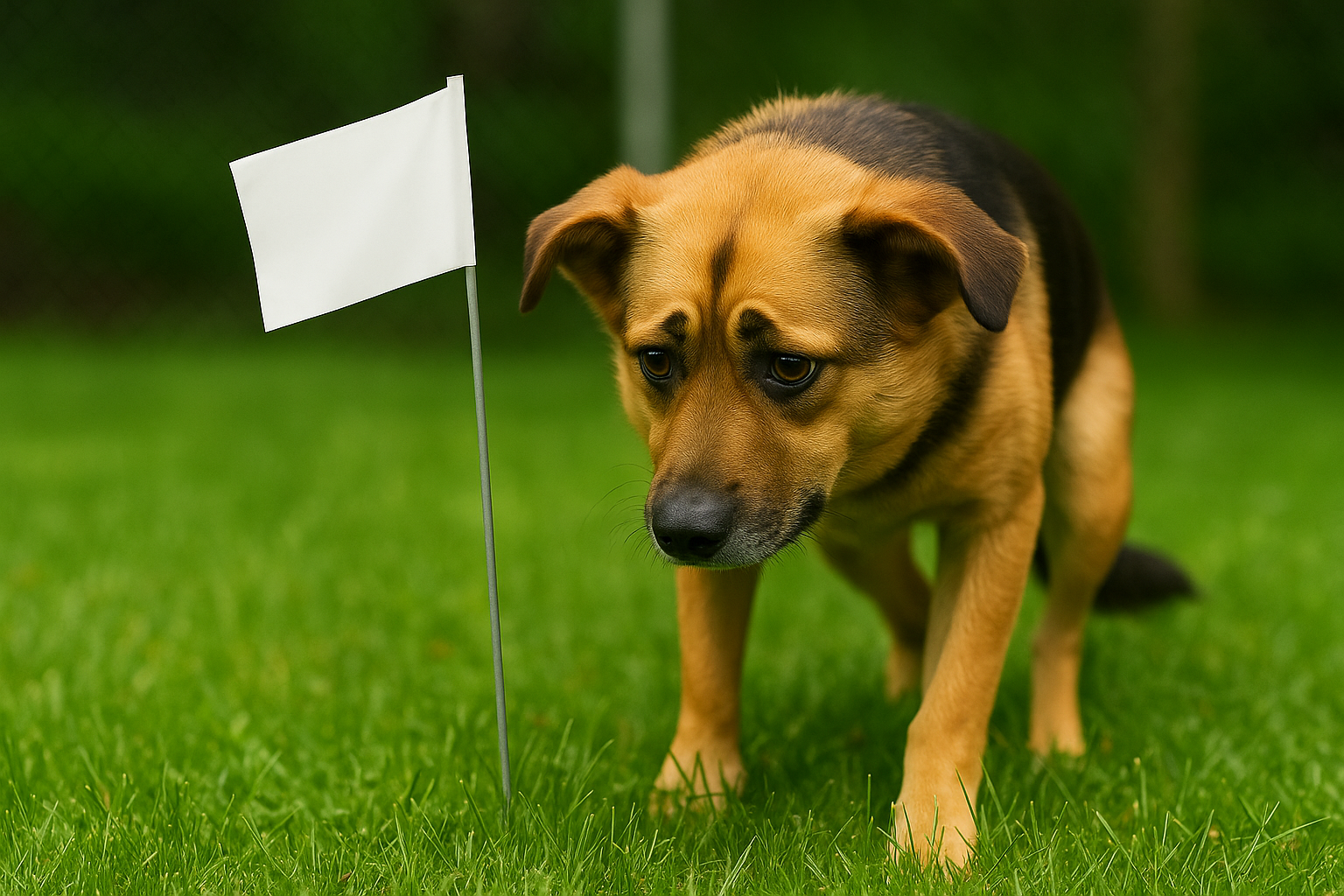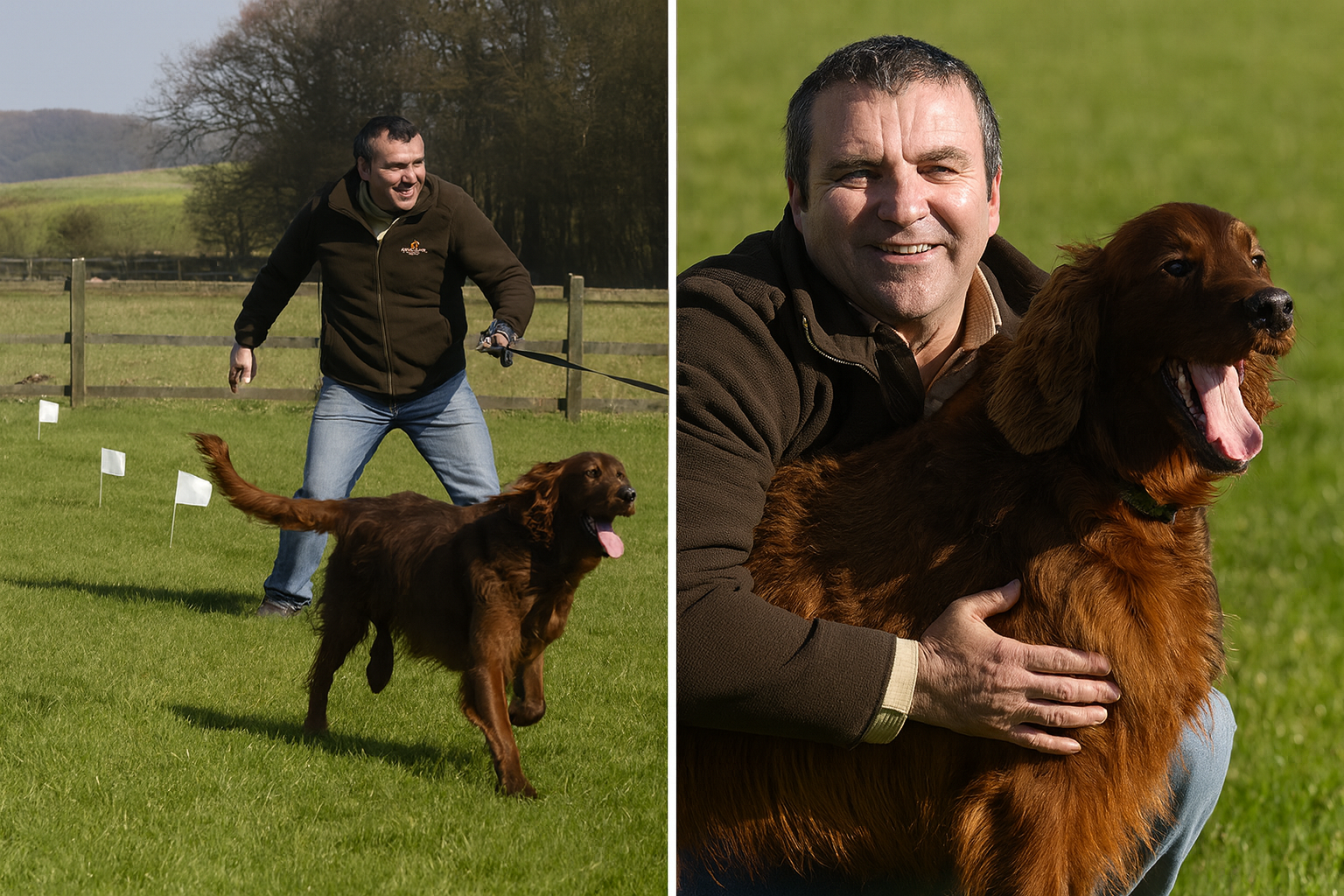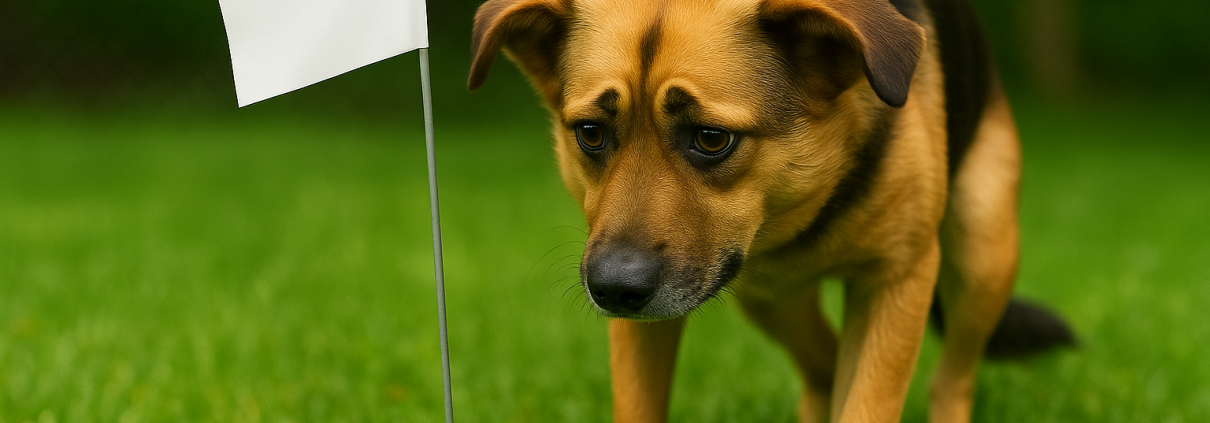Training a Nervous Dog to a Dog Fence: 7 Common Mistakes
Training a Nervous Dog to a Dog Fence: Common Mistakes and How to Fix Them
Training a nervous or anxious dog to a dog fence can feel stressful, especially if your pet is shy, timid, or easily startled. While a dog fence can be a brilliant way to keep sensitive dogs safe in the garden, some common training mistakes can accidentally increase their anxiety or slow down progress. In this guide, we’ll walk through the most frequent issues owners face when training a nervous dog to a dog fence – and how to fix them with gentle, confidence-building methods.

Why Nervous Dogs Need a Different Training Approach
Nervous, fearful, or sensitive dogs often react strongly to new sensations, sounds, and changes in their environment. A dog who is already worried about the outside world may find boundary training overwhelming if it’s rushed or inconsistent.
That’s why gentle dog fence training for anxious dogs needs to be:
- Slow and structured – lots of small, positive steps rather than one long session.
- Predictable – clear boundaries, clear signals, and calm reactions from their owner.
- Supportive – using treats, praise, and reassurance to build confidence.
- Positive – Always be positive and upbeat with your dog
With the right approach, a dog fence can actually help nervous dogs feel safer because they understand exactly where their secure zone ends.
7 Common Mistakes When Training Nervous Dogs to a Dog Fence
Mistake 1: Going Too Fast on Day One
One of the biggest mistakes is trying to “get it done” in a single long session. For a nervous or timid dog, this can be overwhelming and may make them anxious about the garden itself.
How to fix it: Keep sessions short and gentle – around 3–5 minutes at a time is ideal. Aim for several calm, successful sessions over a few days rather than one big push.
Mistake 2: Skipping Familiarisation Time
Some owners put the collar on and start training straight away. For sensitive dogs, this can feel like too much change all at once.
How to fix it: Spend a day or two simply letting your dog explore the garden on a loose lead without any collar activity. Then introduce the receiver collar switched off so they get used to wearing it comfortably before the fence is active.
Mistake 3: Poor Collar Fit or Incorrect Level
If the receiver collar is too loose or the contact posts aren’t touching the coat properly, the dog may not feel the gentle correction at all – or only feel it unpredictably. On the other hand, setting the level too high can be unfair for a nervous dog.
How to fix it: Make sure the collar fits snugly (you should be able to slide one finger under the strap). With our DogFence collars, start at the lowest suitable level for your dog’s size and temperament and adjust gently if needed. If you’re unsure, speak to our team for guidance.
Mistake 4: Inconsistent Use of Training Flags
Flags are a vital visual aid, especially for anxious dogs who rely on clear, consistent cues. Taking them away too soon or placing them randomly can confuse your dog.
How to fix it: Mark the boundary clearly with flags, spaced evenly. During training, always guide your dog back from the flags using the same word, such as “back” or “wait”. Only begin to remove flags once your dog is consistently responding to the warning beep.
Mistake 5: Training When You’re Rushed or Stressed
Nervous dogs are very good at picking up their owner’s mood. If you’re tense, in a hurry, or feeling frustrated, they may associate training with stress.
How to fix it: Choose a quiet time of day when you can stay calm and patient. Use a soft voice, relaxed body language, and plenty of praise. If either of you feels frazzled, stop and try again later.
Mistake 6: Making Sessions Too Long
Long training sessions can easily tip nervous or easily overstimulated dogs into shutdown or frantic behaviour.
How to fix it: Short, frequent sessions work best. A few minutes of successful training, followed by play or a cuddle, will build your dog’s confidence far more effectively than a long, intense session.
Mistake 7: Not Checking the Equipment Regularly
If the collar battery is flat, the collar is damaged, or the boundary wire has been cut, the system can’t do its job. Owners may think the fence has “failed” when in reality it needs a simple check.
How to fix it: Test the system regularly and check the collar’s battery, fit, and condition at least once a month. Our DogWatch FM technology is extremely reliable, but like any safety system, it needs basic maintenance.

Training flags to mark the boundary essential for gentle dog fence training
Gentle DogFence Training Checklist for Anxious Dogs
When training a nervous dog to a dog fence, use this checklist as a guide:
- Allow calm familiarisation time in the garden before activating the system.
- Introduce the collar gradually, pairing it with treats and praise.
- Use training flags to make the boundary clear and visible.
- Start with the warning beep only, then add the gentle correction when your dog understands the flags.
- Keep sessions short, positive, and consistent.
- Always guide your dog back into the safe zone with calm reassurance.
- Celebrate successes – nervous dogs thrive on confident, happy feedback from you.
When to Ask for Professional Help
Every nervous dog is different. Some adapt quickly with a little reassurance; others need a more tailored approach. If your dog has a history of severe anxiety, is a very nervous rescue, or you’re simply unsure where to start, it can be reassuring to have expert support.
At DogFence Ltd, our installers are experienced in working with anxious, timid, and sensitive dogs. We’ll help you choose the correct settings, show you exactly how to introduce the system gently, and support you through the training process so both you and your dog feel confident. If you’d like expert help from the start, our professional installation service (https://dogfence.co.uk/installation/) ensures the system is set up correctly and your nervous dog receives gentle, confidence-building training.

Our professional DogFence installers are highly experienced in training nervous and sensitive dogs—helping them gain confidence and enjoy safe freedom in the garden.
Need Help Training a Nervous Dog to a Dog Fence?
Call us on
01628 476475
|
Message us on WhatsApp
|
Request a Free Quote Online
For a full step-by-step guide, read our main article How to Train a Nervous Dog with a Dog Fence, or visit our Dog Fence FAQ page for more answers.




